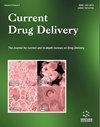Customizable Microfluidic Devices: Progress, Constraints, and Future Advances
IF 3
4区 医学
Q2 PHARMACOLOGY & PHARMACY
引用次数: 0
Abstract
Abstract: The field of microfluidics encompasses the study of fluid behavior within micro-channels and the development of miniature systems featuring internal compartments or passageways tailored for fluid control and manipulation. Microfluidic devices capitalize on the unique chemical and physical properties exhibited by fluids at the microscopic scale. In contrast to their larger counterparts, microfluidic systems offer a multitude of advantages. Their implementation facilitates the investigation and utilization of reduced sample, solvent, and reagent volumes, thus yielding decreased operational expenses. Owing to their compact dimensions, these devices allow for the concurrent execution of multiple procedures, leading to expedited experimental timelines. Over the past two decades, microfluidics has undergone remarkable advancements, evolving into a multifaceted discipline. Subfields such as organ-on-a-chip and paper-based microfluidics have matured into distinct fields of study. Nonetheless, while scientific progress within the microfluidics realm has been notable, its translation into autonomous end-user applications remains a frontier to be fully explored. This paper sets forth the central objective of scrutinizing the present research paradigm, prevailing limitations, and potential prospects of customizable microfluidic devices. Our inquiry revolves around the latest strides achieved, prevailing constraints, and conceivable trajectories for adaptable microfluidic technologies. We meticulously delineate existing iterations of microfluidic systems, elucidate their operational principles, deliberate upon encountered limitations, and provide a visionary outlook toward the future trajectory of microfluidic advancements. In summation, this work endeavors to shed light on the current state of microfluidic systems, underscore their operative intricacies, address incumbent challenges, and unveil promising pathways that chart the course toward the next frontier of microfluidic innovation.可定制的微流体装置:进展、限制和未来进展
摘要:微流体领域包括对微通道内流体行为的研究,以及为流体控制和操纵量身定制的具有内部隔间或通道的微型系统的开发。微流控装置利用流体在微观尺度上所表现出的独特的化学和物理性质。与它们的大型对应物相比,微流体系统提供了许多优点。它们的实施有利于减少样品、溶剂和试剂体积的调查和利用,从而降低了操作费用。由于其紧凑的尺寸,这些设备允许并行执行多个程序,导致加速实验时间线。在过去的二十年中,微流体学取得了显著的进步,发展成为一门多方面的学科。诸如器官芯片和基于纸张的微流体等子领域已经成熟为不同的研究领域。尽管如此,虽然微流体领域的科学进步已经显著,但其转化为自主终端用户应用仍然是一个有待充分探索的前沿。本文阐述了审查当前研究范式的中心目标,普遍的局限性,以及可定制微流体装置的潜在前景。我们的调查围绕着最新的进展,普遍的限制,和可想象的轨迹适应性微流控技术。我们细致地描述了现有的微流控系统的迭代,阐明了它们的工作原理,仔细考虑了遇到的局限性,并对微流控技术的未来发展轨迹提供了一个有远见的展望。总而言之,这项工作努力阐明微流控系统的现状,强调其操作的复杂性,解决当前的挑战,并揭示有希望的途径,为微流控创新的下一个前沿指明方向。
本文章由计算机程序翻译,如有差异,请以英文原文为准。
求助全文
约1分钟内获得全文
求助全文
来源期刊

Current drug delivery
PHARMACOLOGY & PHARMACY-
CiteScore
5.10
自引率
4.20%
发文量
170
期刊介绍:
Current Drug Delivery aims to publish peer-reviewed articles, research articles, short and in-depth reviews, and drug clinical trials studies in the rapidly developing field of drug delivery. Modern drug research aims to build delivery properties of a drug at the design phase, however in many cases this idea cannot be met and the development of delivery systems becomes as important as the development of the drugs themselves.
The journal aims to cover the latest outstanding developments in drug and vaccine delivery employing physical, physico-chemical and chemical methods. The drugs include a wide range of bioactive compounds from simple pharmaceuticals to peptides, proteins, nucleotides, nucleosides and sugars. The journal will also report progress in the fields of transport routes and mechanisms including efflux proteins and multi-drug resistance.
The journal is essential for all pharmaceutical scientists involved in drug design, development and delivery.
 求助内容:
求助内容: 应助结果提醒方式:
应助结果提醒方式:


